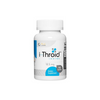According to an article published in the
Mail and Guardian, four out of five children do not eat enough omega fatty acids, and more than half of the British population has a diet that does not contain sufficient fatty acids to support health. This situation has led to one of the bread manufacturers adding omega 3 fats to their breads.
You need a healthy proportion of essential fatty acids to:
- Support the development and maintenance of healthy brain tissue.
- Support vision and to ensure the structural health of the eyes.
- Encourage a healthy immune response.
- Regulate the inflammatory process.
- Maintain healthy blood pressure levels.
- Regulate triglyceride levels.
- Support healthy heart function.
- Provide building blocks to produce some hormones and other compounds.
- Produce new cells for the body to maintain and repair tissue, cells, and organs.
- Support nervous tissue health and function.
Essential fatty acids affect almost every system and function in your body. There are two forms of essential fatty acids that are vital for health, namely, omega 3 fatty acids and omega 6 fatty acids, and it is not only important to ensure you get a sufficient amount of these fatty acids, but it is also important to ensure your diet contains the right proportions of these fats. Omega 9 fatty acids have not been classified as essential fatty acids, but they also offer various health benefits.
Omega 3 Fatty Acids
Omega 3 fatty acids are found abundantly in fatty fish, walnuts, flaxseeds, beef, and Brussel sprouts. Different types of food provide omega 3 fatty acids in different forms. Flaxseeds are an excellent source of ALA or alpha-lipoic acid. Fatty fish like salmon and sardines supply ALA, along with EPA and DHA.
You need healthy amounts of ALA, as well as EPA and DHA to support the body. EPA, DHA, and ALA serve different functions in your body. Your body can
convert ALA into EPA and DHA but the conversion process is not very efficient, and it is therefore best to supply the body with ALA, EPA, and DHA.
Although different agencies around the world have set different levels for the DHA and EPA that are required, agencies agree that certain amounts of DHA and EPA are vital for supporting health.
The
EFSA recommends that 2 mg of EPA per day is necessary to maintain normal blood pressure and to encourage healthy triglyceride levels. It also recommends 250 mg per day of EPA to support healthy heart function.
The EFSA suggests that 250 mg of DHA is important for supporting normal brain function and for ensuring healthy vision.
One serving of fatty fish like salmon, tuna, or mackerel contains between 500 and 1500 mg of omega 3 fatty acids, which is why some health agencies recommend you consume at least two portions of fatty fish per week.
Omega 6 Fatty Acids
Omega 6 fatty acids are found abundantly in vegetable oils. Omega 6 fatty acids play a vital role in supporting brain health, and in supporting healthy skin and nails. They help to encourage healthy bone growth, they regulate the metabolism, and they ensure a healthy reproductive system.
Although omega 6 essential fatty acids are vital for health, they also compete with omega 3 fatty acids. It is therefore important to ensure your ratio of omega 3 fatty acid intake compared to your omega 6 fatty acid intake remains within healthy limits.
Research suggests that the average ratio of omega 6 to omega 3 is 15 to 1. In other words, we are eating fifteen portions of omega 6, and only one portion of omega 3, and this huge disparity has been linked to various conditions, including inflammatory conditions.
To address this issue, individuals need to increase their intake of omega 3 and decrease their intake of omega 6 to help balance the ratio of fatty acids in the body.
Omega Supplementation
One of the best ways to ensure you get the right proportion of omega fatty acids is to invest in an
omega 3 supplement or in a balanced omega supplement that offers you the correct ratios of omega 3 and omega 6.
The
Omega 3,6,9 Emulsion by BioGenesis Nutraceuticals provides you with a balanced ratio of essential omega 3 and omega 6 fatty acids, and includes 690 mg of oleic acid to provide you with a comprehensive combination of essential fatty acids to support your health.





